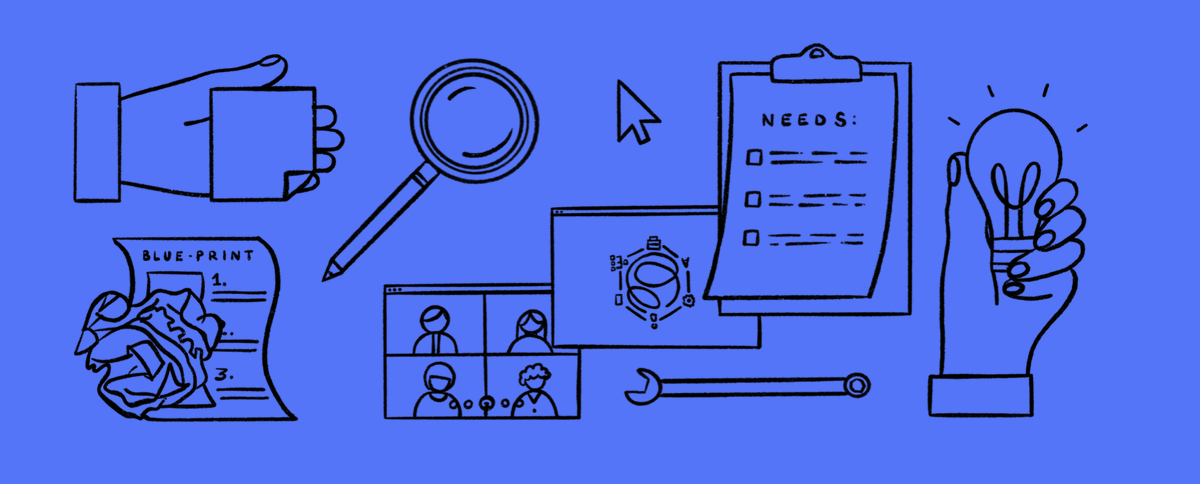𝐈𝐧𝐬𝐢𝐠𝐡𝐭𝐬 𝐨𝐧 𝐨𝐮𝐫 𝐩𝐫𝐨𝐝𝐮𝐜𝐭 𝐫𝐨𝐚𝐝𝐦𝐚𝐩 𝐬𝐞𝐭𝐮𝐩 𝐩𝐫𝐨𝐜𝐞𝐬𝐬
First things first: we do not build our product roadmap in a vacuum. We have a pretty sophisticated process.
Here you go:
1⃣ MOALs
These are the Mid-term goals on a company level and they are the guiding stars for one year (e.g., 2024).
We discuss these in the leadership team towards the end of the year for the next year. We have six different themes: Financials, Product, Technology, Scalability, Customer, People.
The descriptions are pretty high-level, however they shall give all the teams guidance for their planning.
2⃣ Product Strategy
The product strategy is revised every three months (minimum), especially after the MOALs process we recheck whether anything from the MOALs can or must be derived for the product strategy.
3⃣ Product Goals
The Product Goals are derived from the Product Strategy and MOALs and shall give the team guidance.
The Product Goals shall support achieving the MOALs.
Per product and depending on the team size we set a maximum of four Product Goals.
4⃣ Outcomes
Based on the Product Goals we derive specific outcomes we want to achieve. These Outcomes are measurable and shall give us an understanding whether we have achieved the Product Goals. We usually have multiple defined Outcomes.
5⃣ Product Roadmap
We derive what we need to do to achieve these Outcomes. Lots of the work is actually Product Discovery. But eventually, topics will be derived for the actual product roadmap and later developed.
---
As you can see, the Product Roadmap is tied to many steps before and all is connected.
Yes, it takes quite some time to build all of that. On the other side, it gives alignment and everyone knows on what the things they are working actually pay into.
First things first: we do not build our product roadmap in a vacuum. We have a pretty sophisticated process.
Here you go:
1⃣ MOALs
These are the Mid-term goals on a company level and they are the guiding stars for one year (e.g., 2024).
We discuss these in the leadership team towards the end of the year for the next year. We have six different themes: Financials, Product, Technology, Scalability, Customer, People.
The descriptions are pretty high-level, however they shall give all the teams guidance for their planning.
2⃣ Product Strategy
The product strategy is revised every three months (minimum), especially after the MOALs process we recheck whether anything from the MOALs can or must be derived for the product strategy.
3⃣ Product Goals
The Product Goals are derived from the Product Strategy and MOALs and shall give the team guidance.
The Product Goals shall support achieving the MOALs.
Per product and depending on the team size we set a maximum of four Product Goals.
4⃣ Outcomes
Based on the Product Goals we derive specific outcomes we want to achieve. These Outcomes are measurable and shall give us an understanding whether we have achieved the Product Goals. We usually have multiple defined Outcomes.
5⃣ Product Roadmap
We derive what we need to do to achieve these Outcomes. Lots of the work is actually Product Discovery. But eventually, topics will be derived for the actual product roadmap and later developed.
---
As you can see, the Product Roadmap is tied to many steps before and all is connected.
Yes, it takes quite some time to build all of that. On the other side, it gives alignment and everyone knows on what the things they are working actually pay into.

• • •
Missing some Tweet in this thread? You can try to
force a refresh












